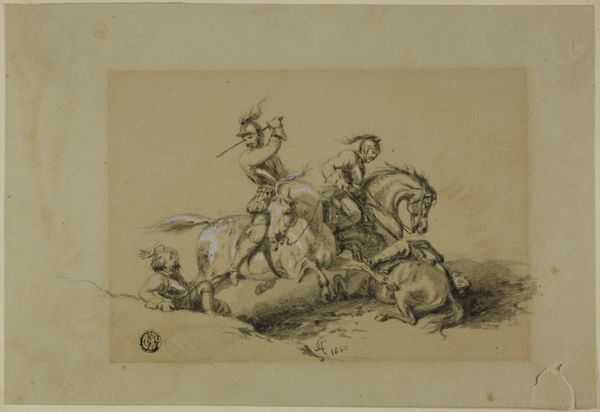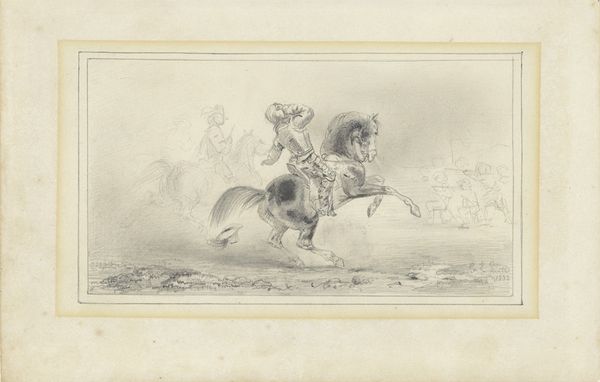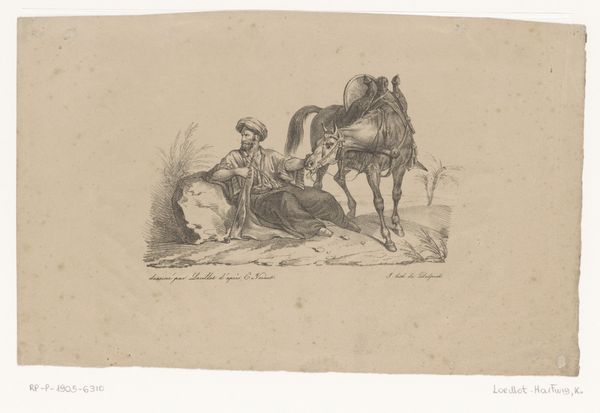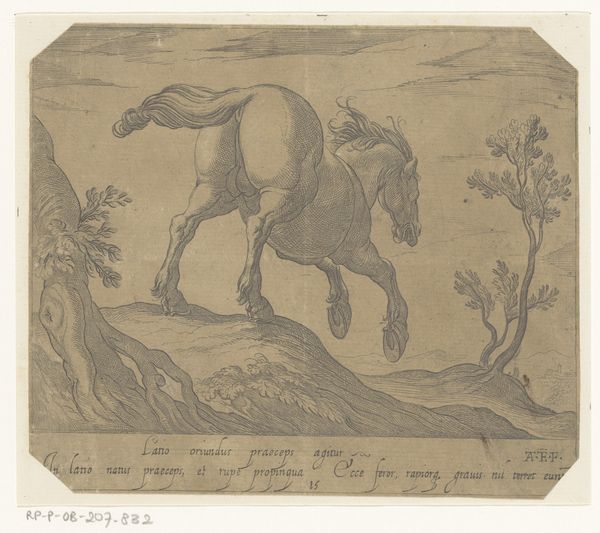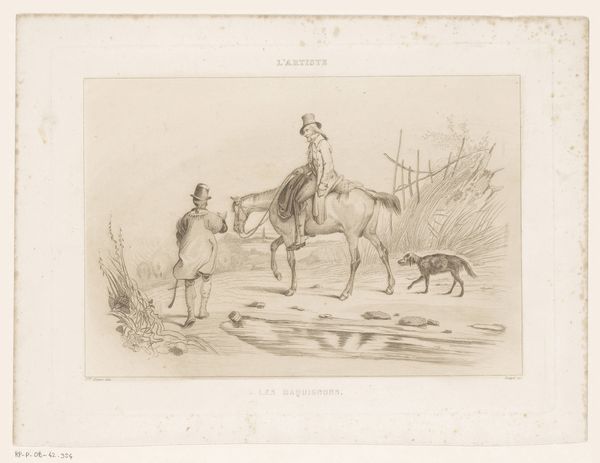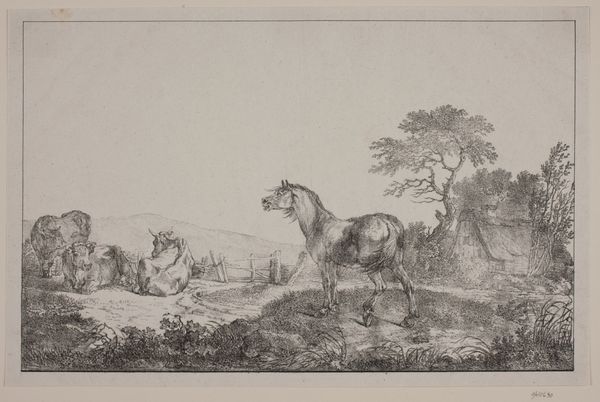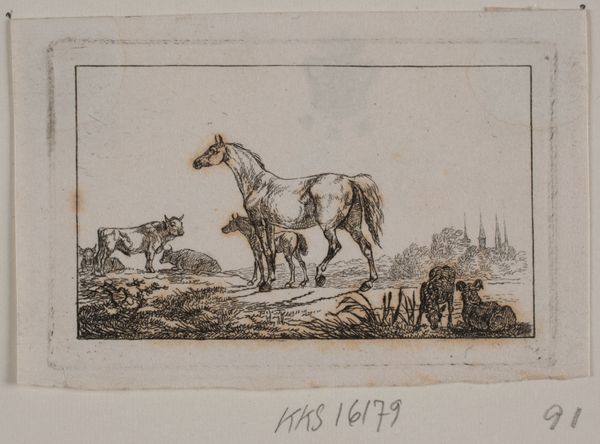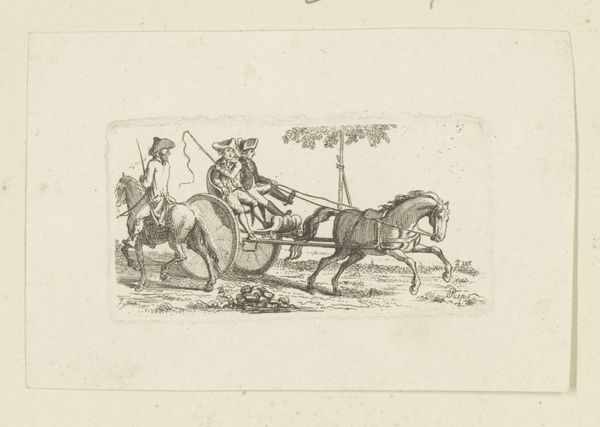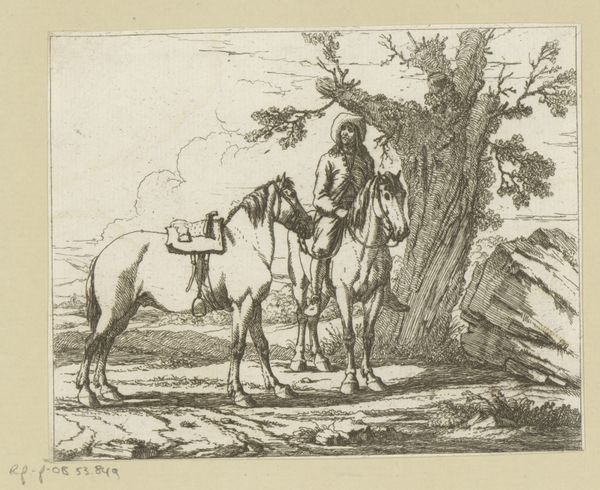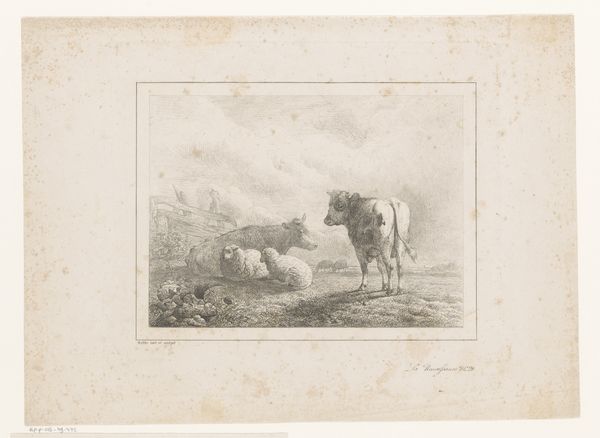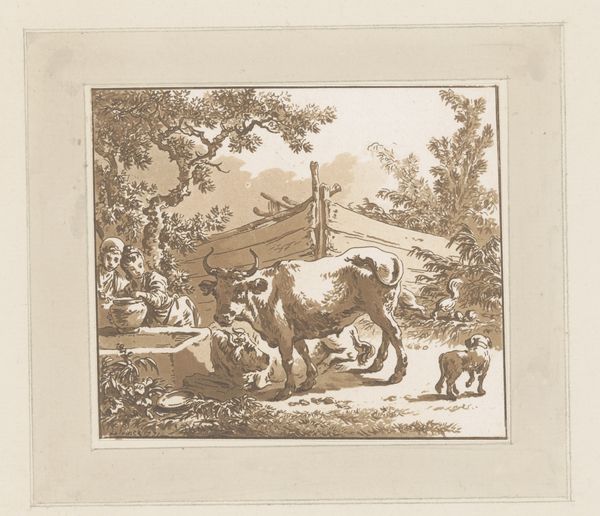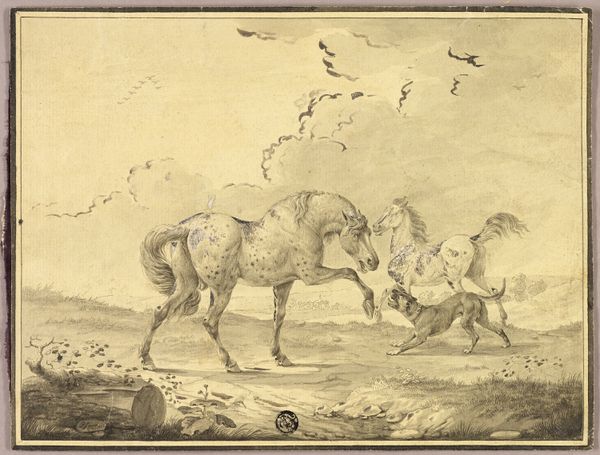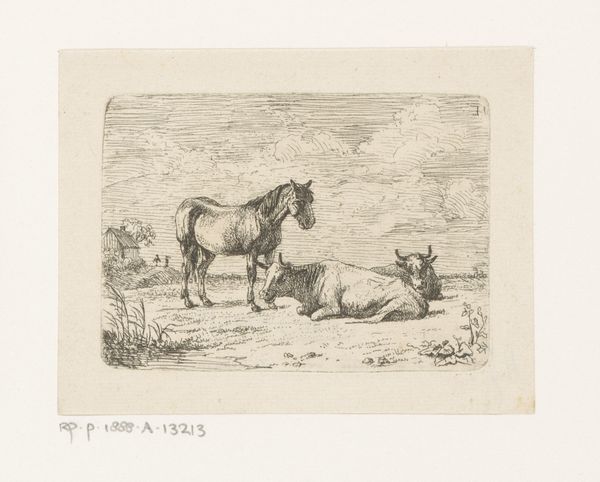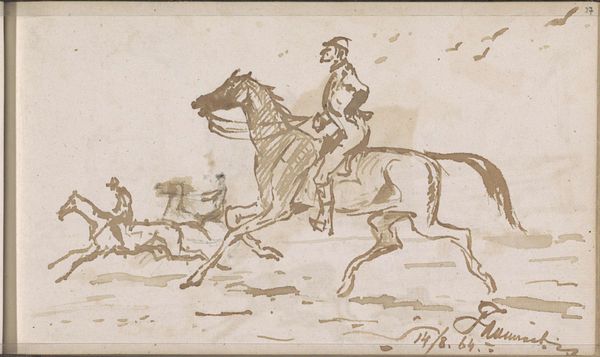
print, etching
#
animal
# print
#
etching
#
old engraving style
#
landscape
#
etching
#
realism
Dimensions: 130 mm (height) x 204 mm (width) (bladmaal)
Curator: Here we have Christian David Gebauer's "En hoppe med sit føl", which translates to "A mare with her foal", from 1827. It’s a print, more specifically an etching. Editor: The scene almost floats; it is all delicately captured. There is such tender, nervous energy in those thin lines. It makes me want to reach out to them; they look so tactile, like I can run my fingers through their delicate outlines. Curator: It's interesting you say 'tactile' because an etching like this, while visually refined, is a product of real, physical labor. Think about the copper plate, the acid baths, and the controlled pressure— it transforms the whole production process into something more than just the representation of a pastoral landscape. Editor: Absolutely! This etching process really intrigues me. There is the transformation from this grounded process into something ethereal, as these graceful horses take center stage. But do you think the surrounding decorative border adds to the composition or detracts? Curator: It's typical of the time and echoes how prints were often framed and consumed, placing a work like this inside a broader cultural landscape, ready to be enjoyed at home. The frame brings attention to print as object of labour and capital. It’s the materiality that speaks volumes here, about how even the 'high' art is rooted in tangible production, even as its supposed to uplift the mind. Editor: Maybe so, but for me, the artist seems to want to highlight this natural scene. The affection between mare and foal is undeniable. But how to best convey this sort of emotional depth and intimacy when one uses etching as a tool? A cold calculation indeed. Curator: In a way, etching became a powerful tool, especially during the nineteenth century, as an efficient way to reproduce images widely, expanding the distribution of art beyond wealthy patrons. Editor: Perhaps the real story here isn’t just about horses, but about how art became accessible, in an increasingly material way. This changes what artwork gets reproduced, who gets to see it, who gets represented, and to what effect. Curator: Precisely! Each line etched here is not only a mark of aesthetic skill, but a testament to the labor that makes art circulate in society, creating these small windows into our historical experience. Editor: What was once confined to galleries and the elite, becomes shared in homes. It makes you wonder about those first encounters—how the world was being reconfigured through accessible image production! Curator: Exactly. Each stage of its making adds another dimension. Each reveals a history in consumption and circulation that goes beyond initial, sentimental connection with the image of a horse with a foal.
Comments
No comments
Be the first to comment and join the conversation on the ultimate creative platform.
